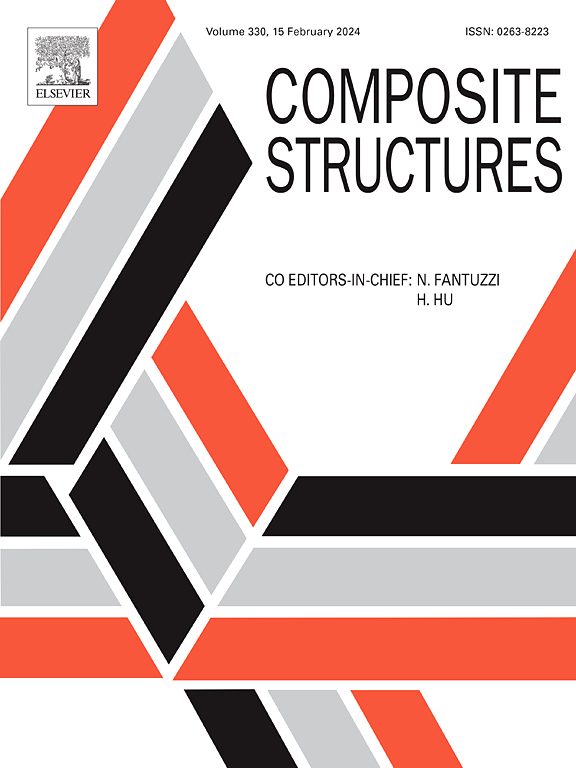Multidirectional mechanical properties of functionally graded triply periodic minimal surfaces for bone tissue engineering applications
IF 6.3
2区 材料科学
Q1 MATERIALS SCIENCE, COMPOSITES
引用次数: 0
Abstract
This work numerically explores the multidirectional mechanical responses and potential biomedical applications of nonlinearly functionally graded bone tissue engineering structure with triply periodic minimal surfaces, focusing on the anisotropy of effective Young’s modulus, directional phase wave propagation, and multiaxial yield surfaces under varying gradient indices and topologies. The experiments are conducted to verify the accuracy of numerical homogenization in aspects of effective Young’s modulus in graded direction, showing good agreement with a maximum percentage difference of 14.3 %. The results indicate that lowering the gradient index increases the overall stiffness and yield strength in a nonlinear pattern, while reducing the extremeness of anisotropy in the stiffness and phase wave propagation, making bone tissue engineering structure more similar to bone. Interestingly, it demonstrates the possibility of achieving a bone tissue engineering structure stiffness that is comparable to bone, at the same weight, by adjusting the gradient index. Moreover, the development of bone cells within bone tissue engineering structure not only enhances the stiffness of bone- bone tissue engineering structure composite but also reduces the extremeness of anisotropy of the stiffness. The extended Hill’s model demonstrates a good fit with numerical data, particularly for points near the origin, proving to be an effective approach for constructing the multiaxial critical yield surface of the bone tissue engineering structures, at a reduced computational cost. By adjusting the gradient index, the proposed titanium bone tissue engineering structures hold potential for applications in bone implants, such as hip replacements, jaw implants, and similar uses.
求助全文
约1分钟内获得全文
求助全文
来源期刊

Composite Structures
工程技术-材料科学:复合
CiteScore
12.00
自引率
12.70%
发文量
1246
审稿时长
78 days
期刊介绍:
The past few decades have seen outstanding advances in the use of composite materials in structural applications. There can be little doubt that, within engineering circles, composites have revolutionised traditional design concepts and made possible an unparalleled range of new and exciting possibilities as viable materials for construction. Composite Structures, an International Journal, disseminates knowledge between users, manufacturers, designers and researchers involved in structures or structural components manufactured using composite materials.
The journal publishes papers which contribute to knowledge in the use of composite materials in engineering structures. Papers deal with design, research and development studies, experimental investigations, theoretical analysis and fabrication techniques relevant to the application of composites in load-bearing components for assemblies, ranging from individual components such as plates and shells to complete composite structures.
 求助内容:
求助内容: 应助结果提醒方式:
应助结果提醒方式:


